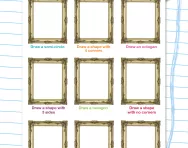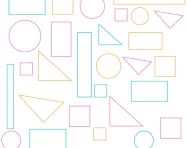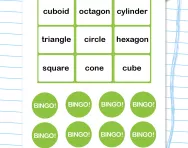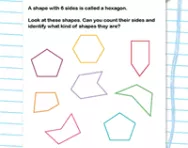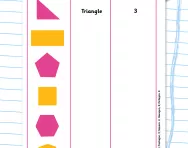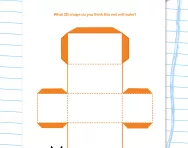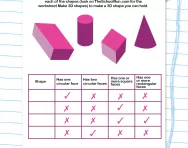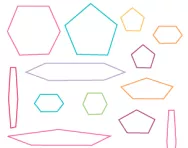Important update from TheSchoolRun
For the past 13 years, TheSchoolRun has been run by a small team of mums working from home, dedicated to providing quality educational resources to primary school parents. Unfortunately, rising supplier costs and falling revenue have made it impossible for us to continue operating, and we’ve had to make the difficult decision to close. The good news: We’ve arranged for another educational provider to take over many of our resources. These will be hosted on a new portal, where the content will be updated and expanded to support your child’s learning.
What this means for subscribers:
- Your subscription is still active, and for now, you can keep using the website as normal — just log in with your usual details to access all our articles and resources*.
- In a few months, all resources will move to the new portal. You’ll continue to have access there until your subscription ends. We’ll send you full details nearer the time.
- As a thank you for your support, we’ll also be sending you 16 primary school eBooks (worth £108.84) to download and keep.
A few changes to be aware of:
- The Learning Journey weekly email has ended, but your child’s plan will still be updated on your dashboard each Monday. Just log in to see the recommended worksheets.
- The 11+ weekly emails have now ended. We sent you all the remaining emails in the series at the end of March — please check your inbox (and spam folder) if you haven’t seen them. You can also follow the full programme here: 11+ Learning Journey.
If you have any questions, please contact us at [email protected]. Thank you for being part of our journey it’s been a privilege to support your family’s learning.
*If you need to reset your password, it will still work as usual. Please check your spam folder if the reset email doesn’t appear in your inbox.
What is a polygon?
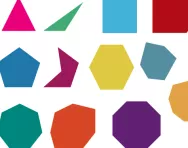
Contents
Examples of regular and irregular polygons
Examples of primary-school polygons
When and how polygons are taught in primary school
What is a polygon?
Examples of regular and irregular polygons
Examples of primary-school polygons
Polygons taught in primary school include:
| Regular | Irregular | |
| Triangle (3 sides) |  |  |
| Quadrilateral (4 sides) |  |  |
| Pentagon (5 sides) |  |  |
| Hexagon (6 sides) |  |  |
| Heptagon (7 sides) |  |  |
| Octagon (8 sides) |  |  |
| Nonagon (9 sides) |  |  |
| Decagon (10 sides) |  |  |
*A regular quadrilateral has a special name. It is called a square.
*There are different types of triangles: an equilateral triangle is a regular triangle and a right-angle triangle and an isosceles triangle are examples of irregular triangles.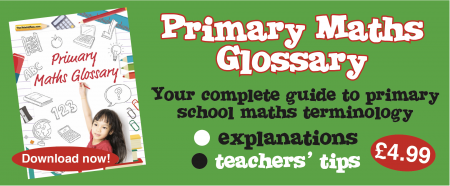
When and how polygons are taught in primary school
| What is taught | How it might be taught | |
| Year 1 | Children are taught to name common 2D shapes including polygons such as squares, rectangles, triangles, pentagons, hexagons and octagons. | Children may learn the shapes through matching activities, going on a shape walk in the school grounds, flash-cards and games. They will look at real-life examples of shapes as well as pictures. |
| Year 2 | Children will be taught to identify properties of shapes such as the number of sides and vertices (corners). | Children will count the number of sides and corners on the shape. They will describe shapes using the properties, for example: This shape has 3 corners and 3 sides. What is the shape? |
| Year 3 | Children will extend their knowledge of polygons to include different types of triangles and quadrilaterals. They will be introduced to heptagons, nonagons and decagons. Knowledge of shape properties will include angles and symmetry of these polygons. | Children will describe shapes and identify them using their properties including symmetry and angles. They might be asked to sort shapes according to their properties using Venn diagrams and Carroll diagrams. |
| Year 4 | Children are taught to compare lengths and angles of polygons to decide if they are regular or irregular. The vocabulary ‘polygon’, ‘regular’ and ‘irregular’ will be used. | Children will be given a range of polygons to sort into regular and irregular; this might be be completing practical tasks or using ICT. |
| Year 5 | Children will be taught to distinguish between regular and irregular polygons based on reasoning about equal sides and angles. | Children will be given shapes to sort and asked to explain why the polygon is regular using the properties of angles and sides. |
| Year 6 | At the end of KS2 children begin to find unknown angles in regular polygons. | Children will be shown how to calculate unknown angles in polygons using their knowledge of angles and a given formula. |
Calculating the size of the angles in a polygon in Year 6
It is important to remember that all the internal angles of a regular polygon are equal.
In Year 6 children use this knowledge and the following formula to calculate the size of the angles.
The size of each of the interior angle of a regular polygon = (n-2) x 180º ÷ n
Where n is the number of sides.
So for example:
Parents FAQs about polygons
How do you name polygons?
Polygons are named based on the number of sides they have. For instance, a triangle has 3 sides, a square has 4 sides, and a pentagon has 5 sides. The names get a bit longer with more sides, like hexagons (6 sides) and octagons (8 sides).
Why do children learn about polygons?
Learning about polygons helps children understand shapes and their properties, which is a fundamental part of geometry. It also helps them develop their problem-solving and spatial reasoning skills, which are important for everyday activities and other areas of maths.
What are some common activities to teach polygons?
Teachers often use hands-on activities like drawing shapes, building models with sticks and clay, and sorting shapes into different categories. These activities help children recognise and remember the properties of different polygons.
How can I help my child learn about polygons at home?
You can support your child's learning by pointing out polygons in everyday life, like the shape of a book, a road sign, or a piece of pizza. You can also play games that involve identifying shapes or do simple art projects where they create pictures using different polygons.
How do polygons relate to real-world objects?
Polygons are everywhere in the real world! For example, a stop sign is an octagon (8 sides) and the panels on a honeycomb are hexagons. Recognising these shapes helps children see the connection between geometry and the world around them, making maths more relevant and interesting.




